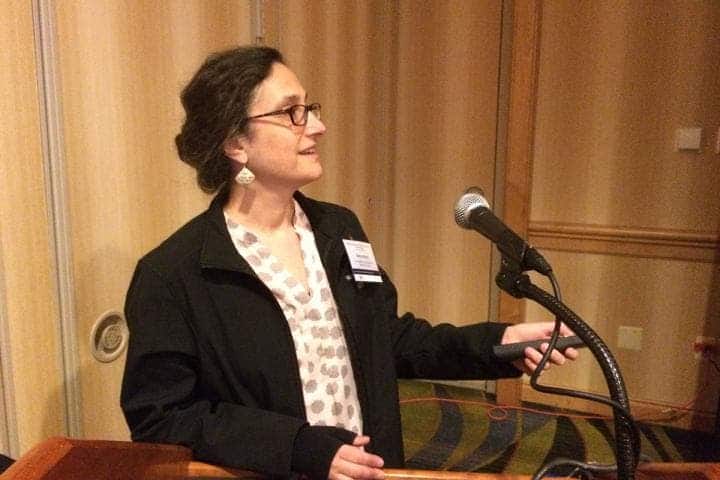Unfortunately, the world of science has plenty of room to improve when it comes to treating men and women equally. A new study has shown that conference organizers are much likelier to invite male speakers over equally qualified women. The same trends likely carry out over all fields of scientific activity.
The science gap

Robyn Klein, MD, PhD, speaks Wednesday, April 19, at a National Institute of Allergy and Infectious Diseases annual meeting. Image credits: Daved Fremont.
“It is an incredibly exciting time to be a neuroimmunologist” — this is how Robyn Klein, MD, PhD, a professor of medicine, of neuroscience, and of pathology and immunology at Washington University started her new study. The explosion in novel findings in this field is evident in the numerous new conferences focused on neuroimmunological mechanisms in health and disease. Unfortunately, these opportunities were not equally available to men and women. Klein explains how the study started:
‘A postdoctoral fellow in my lab pointed out that the preliminary speaker list for an international neuroimmunology conference included only 13 female speakers out of 93 total. I contacted the conference organizers, and they responded that there weren’t enough accomplished female neuroscientists at senior ranks to invite. So I thought, “That’s a hypothesis that I can test.”‘
The conferences themselves aim to provide a high-level, well-balanced scientific program. High-impact publications are the most sought-after currency of science, and it was expected that this would be the decisive factor when it came to sending the invites — but that wasn’t really the case. Klein assembled an ad-hoc committee of neuroimmunologists and asked them to share the names of all the women neurologists who they thought would be good speakers at such conferences. She stopped when she received 29 names of such prominent female researchers, who would have been enough to achieve gender balance. She then studied the number of publications of high-impact and compared it to that of the men who were invited to speak at conferences. She found no difference — in other words, judging by published papers, the men who were invited to speak at conferences were just as qualified (and not more) as the women who weren’t invited. Furthermore, 21 percent of the men had no publications that met her criteria, meaning there were women scientists more qualified for the job.
What this means
Just like with the wage gap, it seems like women receive less credit for the same work. As it turns out, the composition of the organizing committee was important in establishing a gender balance. When there was gender balance in the committee, the conference speakers also tended to exhibit gender balance. But when the committee was exclusively or almost exclusively made out of men, so too were the speakers. There’s growing evidence that the contributions of women scientists are not recognized to the same standard as those of men. This issue has solutions, although they might not be as straightforward as it seems.
Still, talking about this issue makes things better. After she talked to some people about the lack of female speakers, Klein actually influenced organizers and the list of speakers became much more balanced — and much stronger, she says.
“The organizers of the first conference asked for my list of overlooked female neuroimmunologists and invited several of them. They ended up doubling the number of female speakers at their conference, and that raised the quality of the conference.”
Naming the problem is the first step to fighting it. There’s a good chance this bias is unconscious, and similar biases also happen racially and culturally. Although it wasn’t confirmed, it’s highly unlikely that immunology is an outlier when it comes to this. More likely than not, similar things happen in other fields as well.
The study concludes:
“Vigilance should be maintained to ensure that women investigators who merit invitations to share their scientific work and insights are included in scientific programs of conferences. Our findings suggest that by the active generation of lists of names of potential speakers and by assessment of qualifications and productivity, the gender balance in invited speakers could be improved while high scientific standards are also maintained at future neuroimmunology conferences.”
Journal Reference: Robyn S Klein, et al — Speaking out about gender imbalance in invited speakers improves diversity. doi:10.1038/ni.3707









